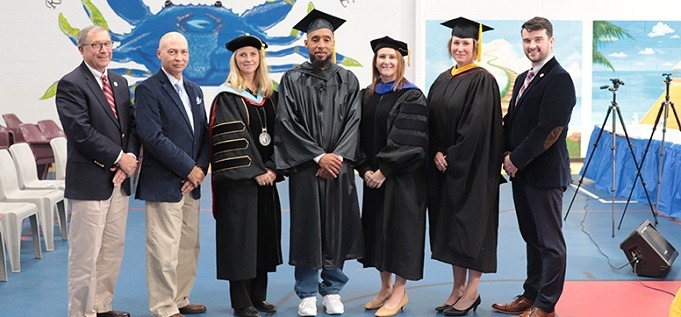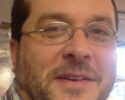Once the norm, collegiate prison programs grow again
By Ed Finkel
March 27, 2024
A section of the sprawling Violent Crime Control and Law Enforcement Act of 1994, a/k/a the Crime Bill, overturned a section of the Higher Education Act of 1965 that allowed prisoners to receive Pell Grants. Prior to that reversal, nearly 800 college programs had been established in about 1,200 prison or jail facilities across the U.S. Three years later, the number of schools offering prison education had shrunk to seven.
“College programs in prisons and in jails were relatively normal. It was understood. It wasn’t a boutique,” says Terri Erwin, liaison to higher education for the Virginia Interfaith Center for Public Policy, a statewide public policy advocacy organization. The passage of the 1994 Crime Bill “wrecked the business model for schools. … It speaks to how important Pell is as a driver in making it possible for colleges to do what I think plenty of them want to do, and will want to do, and that incarcerated people would benefit from.”
In 2015, with the 1990s “tough on crime” era in the rearview mirror, the U.S. Education Department (ED) put out a request-for-proposals (RFPs) for colleges to begin rebuilding the pre-1994 model, through the Second Chance Pell Grant Experiment. And last year, under the Free Application for Federal Student Aid (FAFSA) Simplification Act of 2020, the doors opened again for incarcerated people to apply for Pell grants.
A lot to work through
Representatives of two schools in Virginia that have participated in the Second Chance experiment will appear on an AACC 2024 panel, along with Erwin of the Interfaith Center, to talk about the successes they have achieved, the challenges faced and the lessons learned.
“Every state is having to figure out how to get from a small handful of pilot programs, which were the Second Chance Pell initiative, to something resembling a public policy approach,” Erwin says. “And that’s where the sticky business resides.”
Eric Barna, vice president of instruction at Rappahannock Community College in Warsaw and Glenns, Virginia, says two schools in the state initially signed up as part of the 2015 RFP, which later expanded to four.
“We’re called experimental sites for a reason: to figure out how to do this and to make it more generalizable,” he says. “We hope to give the audience at least a little bit of help with, how do you manage some of these things? And where have we been successful?” With 23 community colleges across the state, he adds, “How do we expand what we’re doing so that it reaches all the other correctional facilities and community colleges?”
John Donnelly, vice president of instruction and student affairs at Piedmont Virginia Community College, based in Charlottesville, says that some people might think: “Oh, now that there’s full access for Pell, for all incarcerated students who qualify, geez, open the doors, and let them all come.”
“It’s just not that easy. It’s got a lot of hurdles to overcome, a lot of barriers that are unintentional, but they’re there. And we want to go through that, from the lens of partnerships, of people we have to work with, we have to convince. … But also, how do we work with the Department of Corrections, when we both have overlapping policies and procedures, and they may not be aligned. And then, we have to ensure quality.”
Erwin notes that 95% of prisoners eventually will be released.
“So how do we prepare them better for being employable, in better kinds of jobs?” she says. “How do we help them role-model education for their children, while they’re incarcerated even, which is a big deal. The nuts and bolts of how to do education, I think the community colleges have got that down. … This is just a community of people who stand to benefit from it themselves; but also, the larger society will benefit.”
At Rappahannock, one of the successes to date has been a partnership with the school’s local reentry facility around short-term workforce programming aimed at training students to work in the solar energy farms growing like kudzu in the region.
“There’s a lot of emphasis in Virginia with data centers and those kinds of things, with having alternate power sources rather than fossil fuel,” Barna says. “Solar has been a big thing. It’s been really interesting because students who may not feel they are ‘academic’ are getting exposure to a college program that, they’re like, ‘This is college?’ It changes that whole [self-doubting] dynamic.”
There’s more to the story! Read the full article in CC Daily.



